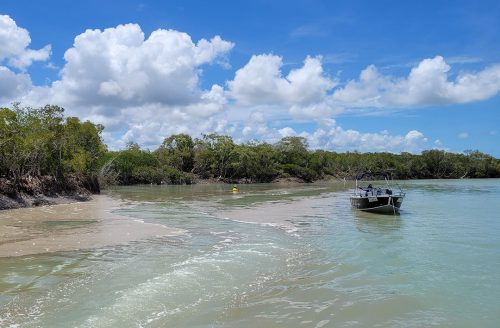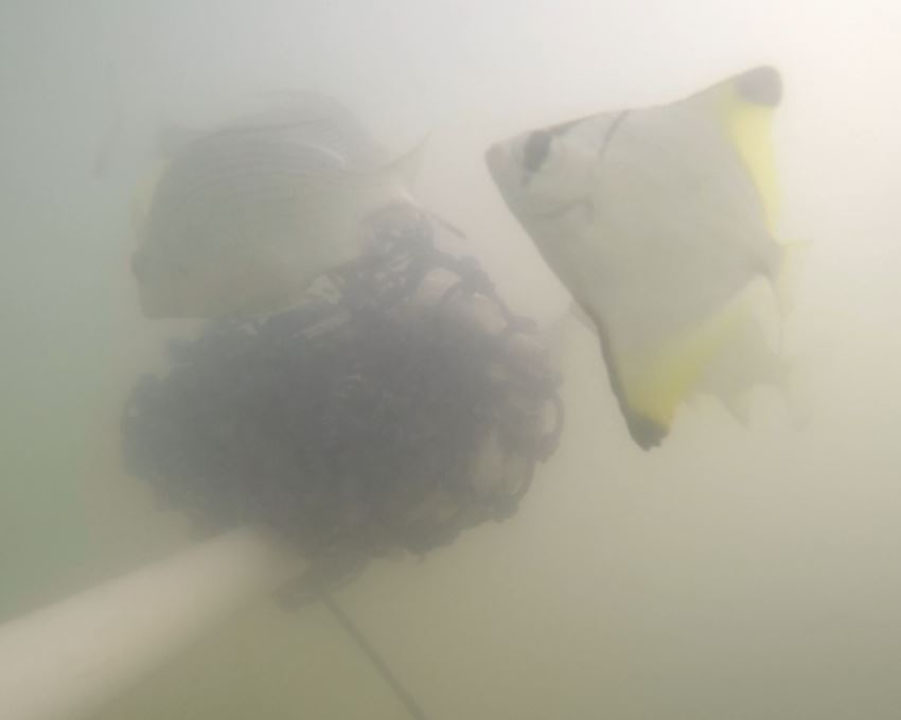Following unusual readings of dissolved oxygen and Chlorophyll-a in our Report Card results for Carmila Creek Estuary, we decided to take a closer look at what was happening in this system. We engaged two of our partners, CQUniversity and Catchment Solutions, to undertake a six-month pilot study investigating water quality.
To make the most of the field time, we also included a fish component to the study to provide some much needed data on estuarine fish populations.
Water Quality
Chlorophyll-a is considered a useful proxy to measure nutrient availability and productivity of a system, with high levels usually indicating poor water quality.
Following unusual readings in our Report Card results, this study was developed to investigate water quality patterns in Carmila Creek, using continuous logging of water quality parameters for 24 hours, once-a-month, for six months, to better understand the natural range in this estuary.
The study helped us gain knowledge about the complex interactions between nutrients, algae and physicochemical parameters that occur within this estuary. Due to these complexities, the current sampling method used to obtain data for Carmila Creek (one-off sampling of each parameter conducted each month at different times of the day, and on varying levels of the outgoing tide) may not fully represent the impacts of water quality here. The timing of sampling within the tidal and diel cycles would likely affect the results and therefore Report Card grades.
However, the suite of water quality parameters currently collected (nutrients, Chlorophyll-a and DO), combined with explanatory parameters such as salinity, flow, sampling time and the new knowledge of temporal variations provided by this study, could provide for an overall assessment of water quality in Carmila Creek.
Read the full Water Quality Report.

Fish
A component of the Carmila Creek Estuary study focused on fish populations given this key data gap in our Report Card.
Scientists installed underwater video stations, attracting fish with mesh bait bags. They later used the footage to identify the fish species caught on camera.
From the footage, a total of 16 taxa were recorded, and 5 taxa were recorded at each camera site, including prawns, glassfish, banded toadfish, yellowfin bream, and moses perch.
This method of identifying and recording fish species is less hazardous to the fish compared to traditional netting and scuba diving surveys, however it did have drawbacks.
Due to poor visibility in the creek (typically less than 1m), cameras were placed in shallow water where there was higher visibility, which didn’t allow for the recording of fish that live in greater depths. The use of bait also meant herbivorous fish were less likely to be caught on film.
Studies such as this are useful for exploring methodologies particularly when considering future citizen science applications.
Read the full Fish Assemblage Report.



